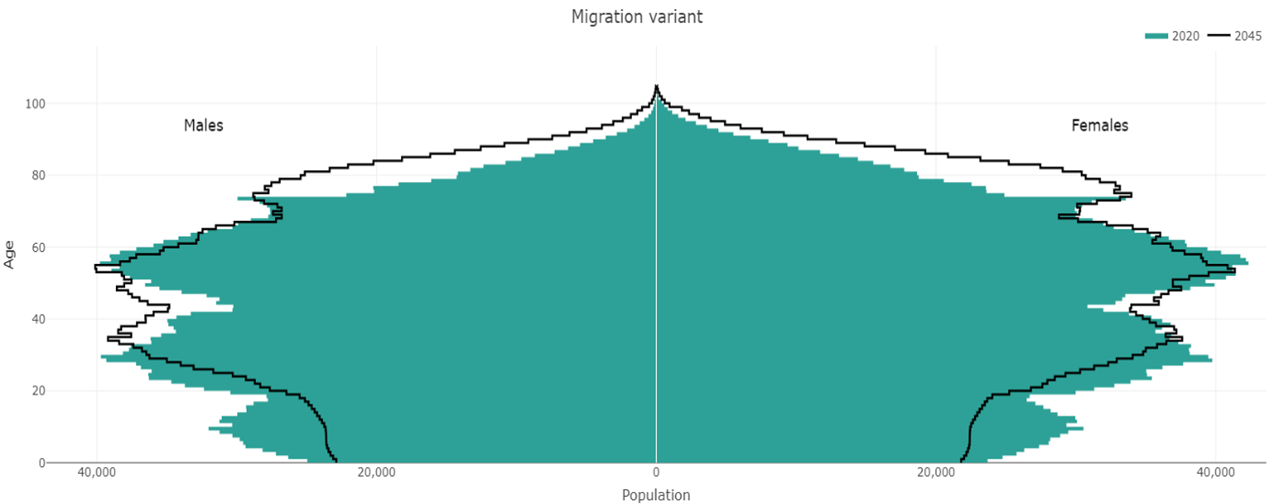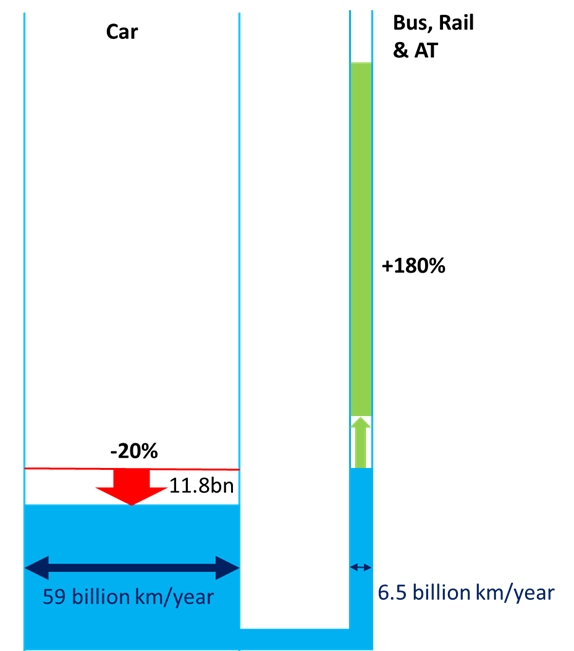Demographics and the future
The population of Scotland was estimated to be 5,436,600 on Census Day 2022, according to data released by National Records of Scotland (NRS). This is the largest population ever recorded by Scotland’s Census and is part of the first set of statistics from the 2022 census
The population of Scotland grew by 141,200 (2.7%) since the previous census in 2011. This is a slower rate of growth than between 2001 and 2011, when the population grew by 233,400 (4.6%). Without migration the population of Scotland would have decreased by around 49,800 since 2011.
The other UK censuses showed higher rates of population growth than in Scotland. The population increased by 6.3% in England and Wales, and by 5.1% in Northern Ireland between 2011 and 2021.
The data also highlights Scotland’s ageing population, with over one million people aged 65 and over (1,091,000). This is over a quarter of a million higher than the number of people under 15 (832,300). The number of people in older age groups (65 plus) increased by 22.5% since 2011.
As context, results from the 1971 census show there were twice as many people under 15 than 65 plus, and in 2011, the two age groups were of a broadly similar size.
On census day there were 2,509,300 households with at least one usual resident. This is up 136,500 (5.8%) from the 2011 census. The increase in the number of households (5.8%) is higher than the increase in the population (2.7%).
This census data will be used to update the current population and household forecasts. The current population forecasts are 2020 based (before the census was undertaken) and will be updated during the course of 2024. The forecasts are similar to the census for 2022 (but do not yet fully reflect the extent of population aging captured by the census).
The following diagram shows the age distribution of the Scottish population in 2020 and the currently projected distribution in 2045. This is the current recommended variant which includes relatively high levels of migration. As migration tends to be from younger people, any fall in migration will likely further impact on the projected aging of the population.

Source: NRS Population projections of Scotland - National Records of Scotland (shinyapps.io)
Transport Challenges and Opportunities
There are transport specific challenges and opportunities that spring from both the wider economic, fiscal, and demographic context but also those that are also sector specific.
Challenges
The greatest challenge, other than those discussed above around the economy and budgets, is around climate change and the achievement of the 20% reduction in private car km by 2030 target. Transport (including international aviation and shipping) remained the largest contributing sector to total Scottish Greenhouse Gas emissions for the seventh consecutive year, accounting for 28% of total Scottish Emissions in 2021.
Total Scottish Transport Greenhouse Gas emissions were 11.6 Mega tonnes of Carbon dioxide equivalent (MtCO2e) in 2023; up 8.7% from the previous year but 19.3% below 2019 levels suggesting travel demand is still impacted by Covid-19 lockdowns, with further scope for rebound in 2022. This means that the transport sector missed its 2021 emissions envelope of 10.2 MtCO2e as set out in the Climate Change Plan Update by 1.4 MtCO2e.
Emissions from cars were the largest contributor to total Scottish transport emissions at 40.7% (4.7 MtCo2e) and increased by 13.9% (0.58 MtCO2e) between 2020 and 2021, which is reflected in a 15% increase in car kilometres over the year (up 4 billion km). Source - Statistics | Transport Scotland Table 5.3
Public Transport capacity will require a step-change if a 20% reduction in car kilometres shifts to bus, active travel, and rail. If there is no reduction in overall travel, then the fall in car use will result in almost a tripling of other modes.

Diagram adapted from: De Haas, M.C., Terwindt, M.J.A., Witte, J. (2022). 'Pricing tools: better as a package? How pricing and other tools influence the choice for public transport'. The Hague: Netherlands Institute for Transport Policy Analysis (KiM)
We have competing priorities that limit our room for manoeuvre in reducing transport emissions, for example, our general commitment to supporting growth and jobs limits our options for drastically reducing emissions. A more specific example is how commitments to improving international connectivity and supporting tourism limits our options around demand management in aviation.
There are labour market challenges in some parts of transport, including shortages and industrial action, which could increase public transport operators’ costs and presents a risk to reliability of PT.
Investments in transport infrastructure and equipment will be under pressure from inflation in construction and materials, and disruption to high-tech supply chains, which have not yet fully recovered from COVID disruption.
Opportunities
There is some evidence of changing travel demand / patterns post pandemic which could reduce pressure on busiest sections of public transport at peak times arguably delaying the need to invest in capacity expansion.
National Planning Framework 4 sets out a range of services and amenities that should be considered by development proposals in contributing to local living.
The living local and 20-minute neighbourhood concept aims to create places where people can meet the majority of their daily needs within a reasonable distance of their home, by walking wheeling or cycling.
We can take advantage of new and future technology including the increasing uptake in battery electric vehicles amongst cars and buses. New Low Emission Zones in Scotland should help support low carbon transition in our cities in increasingly restricting the sales of new ICE vehicles will affect all parts of the country.
Micro-mobility options such as e-bikes, shared cycles and e-scooters are increasingly mature and widespread globally, and low carbon fuels are on the horizon.